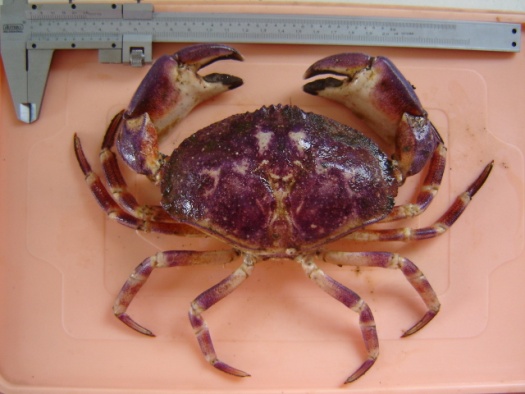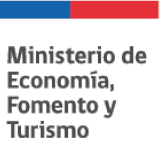

The study is carried out between Valparaiso (V Region) and Los Lagos (X Region), in fishing areas of San Antonio bay (V region), Curanipe (VII Region), Tomé y Tumbes (VIII Region), Los Molinos (XIV Region) y Ancud (X Region).
The Instituto de Fomento Pesquero jointly with the Instituto de Ciencias Marinas y Limnológicas of Universidad Austral de Chile, is developing an update project of biological and fishing parameters of Stone crab from central-south of Chile. This project is financed by Fund of Fishing and Aquaculture Project (FIPA, as per the Spanish acronym).
It focuses on studying crab size and age of first gonadal sexual maturity, first copulation and carriage of eggs, also the type of pairing strategy; the parameters and functions of growth (length and weight) and life history parameters (mortality and critical size).
The project leader is the marine biologist and master’s degree in Management of aquatic resources, Andrés Olguín Ibacache. At the same time, the team of Universidad Austral is led by marine biologist and Ph.D., Mr. Luis Pardo Suazo.
Andrés referred to the study: “the fishery of crab in Chile is supported on a huge variety of species: Stone crab (Metacarcinus edwardsii), hairy crab (Romaleon polyodon), mora crab (Homalaspis plana), lemon crab (Cancer porteri), rower crab (Ovalipes trimaculatus), Panchote crab (Taliepus dentatus), patuda crab (Taliepus marginatus) and queen crab (Cancer plebejus). Given the different scenarios where these crustaceans fishery develops, the dynamic is very different and can be seen a wide variety of fishing effort from shellfish divers to vessels operating with a lot of traps.
From the social point of view, crabs represent the annual or seasonal livelihood of the artisanal sector, who access them for their coastal habitat. The extractive activity takes place throughout all the country. According to official statistics from Servicio Nacional de Pesca y Acuicultura (SERNAPESCA), on recent years, in the proposed area for the study (V to X Region), landings of all species have ranged between 4,000 and 5,000 tons per year, being the main species: stone crab, hairy crab, lemon crab, mora crab and rower crabs, which are also the species studied in this project and; when this project is finished, we expect being able to deliver updated information of these five species, in order to quantify the performance of measures management currently imposed,” concluded the researcher of IFOP.




